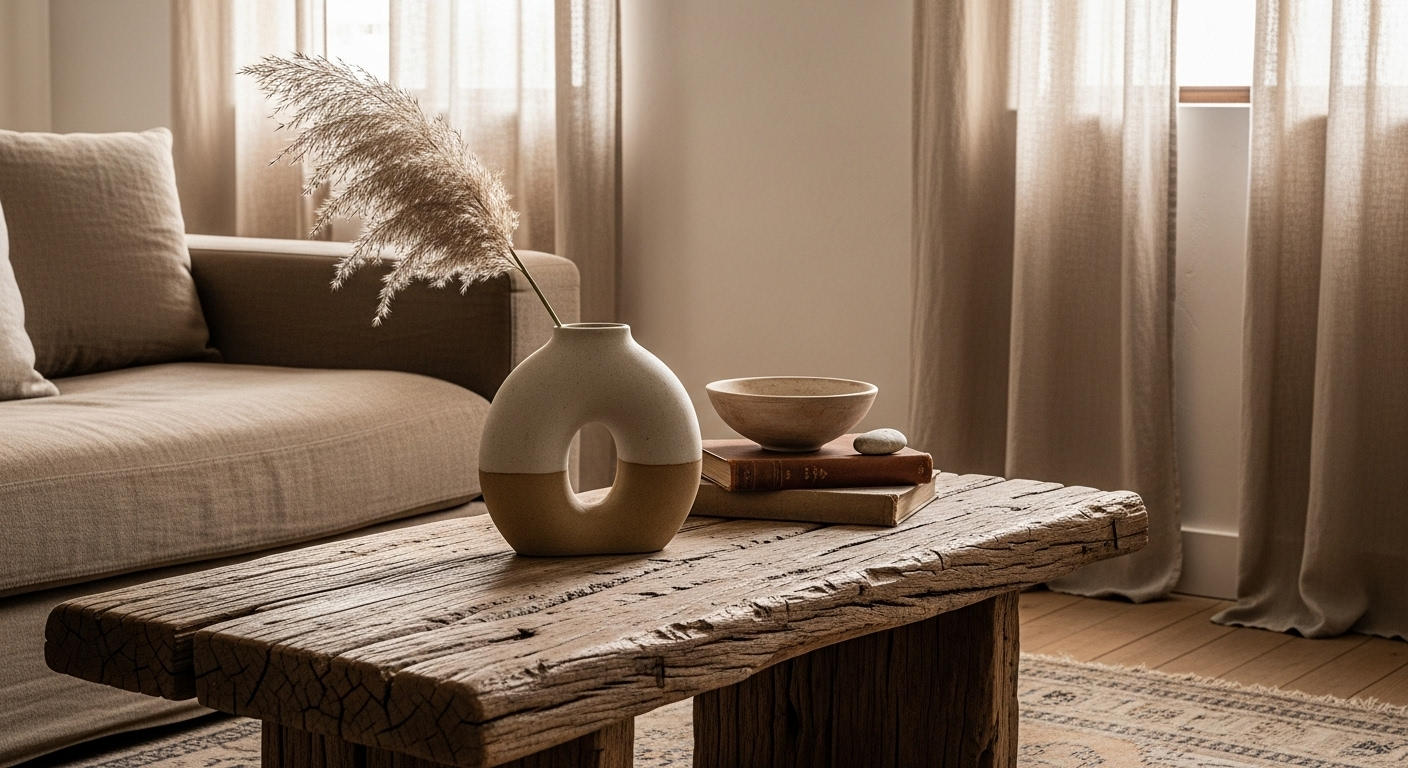Embracing Wabi-Sabi in Western Interiors: The Art of Imperfect Beauty
In a world obsessed with perfection, a gentle revolution is taking place in Western homes. Wabi-sabi, the ancient Japanese aesthetic philosophy celebrating imperfection and transience, is finding its way into modern interior design. This shift marks a departure from the polished, mass-produced look that has dominated for decades, offering a refreshing approach to creating spaces that feel authentically lived-in and deeply personal.

The Roots of Wabi-Sabi
Wabi-sabi’s origins can be traced back to 16th century Japan, emerging as a reaction to the prevailing aesthetic of opulence and perfection. The term combines two concepts: wabi, referring to rustic simplicity and a sense of quietude, and sabi, which embraces the beauty that comes with age and wear.
Initially associated with the Japanese tea ceremony, wabi-sabi gradually permeated various aspects of Japanese culture, including architecture, interior design, and even philosophy. It encouraged a mindful appreciation of the natural cycle of growth, decay, and death, finding profound beauty in the subtle imperfections that tell a story of time’s passage.
Wabi-Sabi Meets Western Design
The integration of wabi-sabi into Western interiors represents a fascinating cultural cross-pollination. Unlike the stark minimalism that has dominated many modern spaces, wabi-sabi offers a warmer, more nurturing approach to simplicity. It’s not about creating a Japanese-themed room, but rather about adopting the underlying principles to enhance existing Western aesthetics.
In practice, this might mean incorporating natural materials with visible grain or imperfections, such as unfinished wood or hand-thrown pottery. It could involve embracing the patina that develops on leather furniture over time or celebrating the cracks in a cherished family heirloom rather than hiding them.
Key Elements of Wabi-Sabi Interiors
To truly embrace wabi-sabi in Western homes, several key elements come into play:
-
Natural Materials: Opt for raw, unrefined materials like stone, wood, and clay. These elements bring a sense of earthiness and connection to nature into the home.
-
Imperfect Textures: Seek out items with rough textures, uneven surfaces, or signs of wear. This could include distressed wood furniture, hand-woven textiles, or ceramics with visible brush strokes.
-
Muted Color Palette: Wabi-sabi favors subdued, earthy tones inspired by nature. Think soft greens, warm browns, and muted grays that create a sense of calm and groundedness.
-
Handcrafted Items: Incorporate pieces made by artisans, which often bear the subtle marks of their creator’s hand. This adds character and uniqueness to your space.
-
Simplicity: Embrace a less-is-more approach, focusing on quality over quantity. Each item should serve a purpose or hold special meaning.
The Psychology of Imperfection
Adopting wabi-sabi in home design goes beyond aesthetics; it can have profound psychological benefits. In a culture that often equates perfection with success, surrounding oneself with objects that celebrate imperfection can be deeply liberating.
This approach encourages mindfulness and presence, as it invites us to slow down and appreciate the subtle details and changes in our environment. It fosters a sense of acceptance – of our homes, our possessions, and ultimately, ourselves.
Moreover, wabi-sabi interiors can serve as a powerful antidote to the digital overwhelm many experience. By creating spaces that feel authentic and grounded, we provide a much-needed counterbalance to the polished unreality often portrayed on social media.
Practical Applications in Western Homes
Incorporating wabi-sabi into Western interiors doesn’t require a complete overhaul. Small, thoughtful changes can make a significant impact:
-
Display collections of found natural objects, like interesting stones or driftwood.
-
Choose furniture with visible knots, grain, or slight imperfections.
-
Hang art that celebrates the beauty of everyday moments or imperfect subjects.
-
Use textiles with natural variations in color or texture.
-
Embrace the concept of kintsugi by repairing broken items with gold-toned epoxy, turning flaws into features.
The Future of Wabi-Sabi in Western Design
As sustainability and mindful living continue to gain traction, the principles of wabi-sabi are likely to become increasingly relevant in Western interior design. This aesthetic aligns perfectly with the growing desire for spaces that feel authentic, sustainable, and emotionally resonant.
We may see a rise in demand for artisanal and locally crafted items, as well as an increased appreciation for vintage and antique pieces that bear the beautiful marks of time. The wabi-sabi influence could also lead to innovations in sustainable materials that age gracefully, designed to develop character over time rather than deteriorate.
Challenges and Considerations
While the wabi-sabi aesthetic offers many benefits, it’s not without its challenges in a Western context. One significant hurdle is overcoming the ingrained cultural preference for newness and perfection. Many homeowners may struggle with the idea of intentionally choosing or keeping items that show wear or imperfections.
Additionally, there’s a fine line between thoughtful wabi-sabi design and spaces that simply appear neglected or poorly maintained. Education and a nuanced understanding of the philosophy are crucial to implement it successfully.
Conclusion: A New Perspective on Home
Embracing wabi-sabi in Western interiors offers more than just a fresh design approach; it presents a new way of relating to our living spaces and possessions. By finding beauty in imperfection and transience, we open ourselves to a more mindful, authentic way of inhabiting our homes.
As we navigate an increasingly digital and often chaotic world, the principles of wabi-sabi provide a grounding force, reminding us to appreciate the subtle beauty of the present moment. In doing so, we create homes that are not just visually appealing, but deeply nurturing to the soul – spaces that tell our unique stories and grow more beautiful with time.





